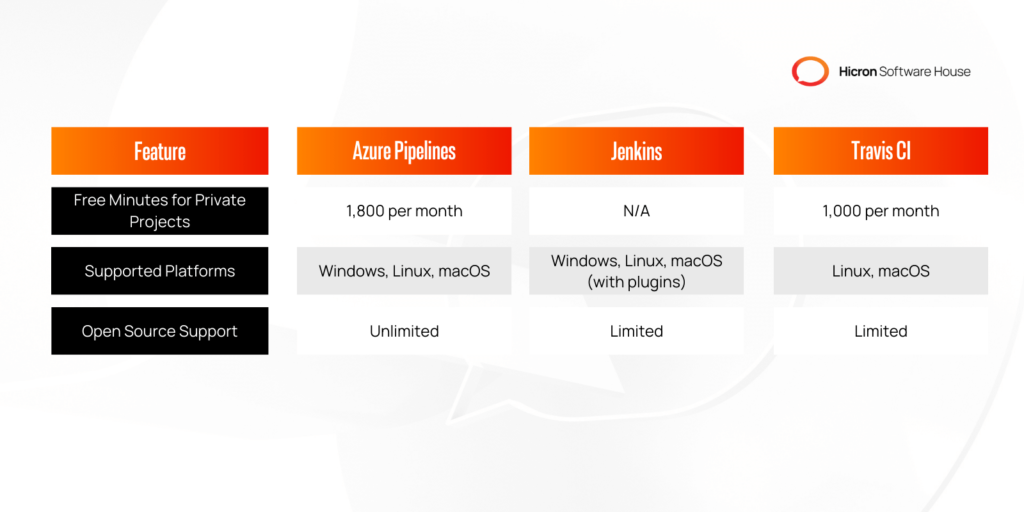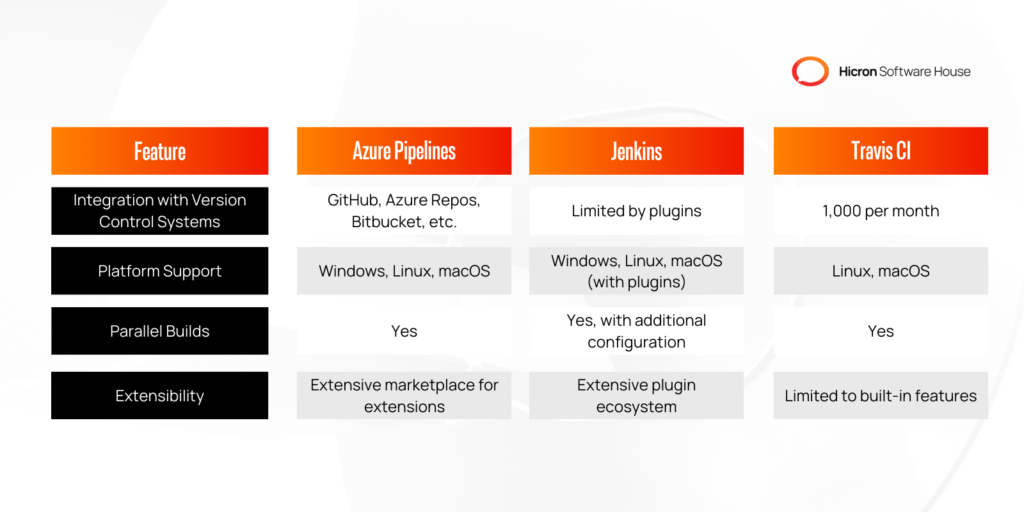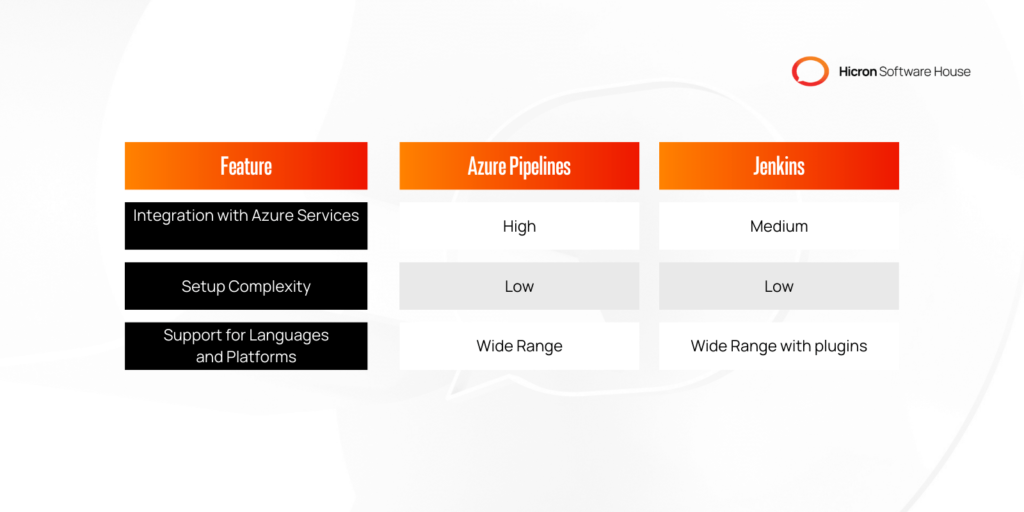How to get the best out of Microsoft Azure Cloud service for your business?
- August 23
- 20 min

In a recent development that’s creating waves across the tech industry, Microsoft announced significant updates to Azure Pipelines, enhancing its capabilities for continuous integration and deployment. This move underscores the growing importance of DevOps practices in today’s fast-paced software development environment. Azure Pipelines, a part of the Azure DevOps suite, offers a robust platform for automating builds, testing, and deploying applications across various environments. With these updates, developers and IT professionals are now better equipped to streamline their development processes, ensuring faster delivery of high-quality software. This article aims to delve into how you can leverage Azure Pipelines to optimize your development workflow, from getting started with the platform to scaling your projects with advanced techniques.
Understanding the intricacies of Azure Pipelines and integrating it into your existing development ecosystem can seem daunting at first. However, with a step-by-step guide to setting up continuous integration, insights into best practices, and tips for enhancing your deployment strategies, you’ll find it easier to harness the full potential of Azure Pipelines. Whether you’re looking to automate your builds and tests for improved efficiency, monitor and manage your deployments more effectively, or integrate Azure Pipelines with your current tools and workflows, this article has got you covered. By exploring the latest features and learning how to scale your projects, you’ll discover how Azure Pipelines can transform your development process, making it more efficient and reliable.
Integrating Azure Pipelines into your development process marks a significant step towards achieving continuous integration and deployment (CI/CD) in your projects. The first phase involves setting up your Azure DevOps account, a straightforward process that paves the way for creating and managing your pipelines. It’s essential to have a clear understanding of your project’s requirements and how they align with Azure Pipelines’ capabilities to ensure a seamless setup. This preparation phase is critical, as it influences the efficiency and effectiveness of your CI/CD pipeline.
Once your Azure DevOps account is ready, the next step is to create a new project and configure your pipeline. Azure Pipelines provides a user-friendly interface to facilitate this, allowing you to choose from a variety of templates or start from scratch based on your project’s specific needs. This flexibility is crucial for tailoring your pipeline to handle your application’s unique requirements, whether it’s deploying a .NET application, a Node.js service, or any other technology stack. Remember, the goal here is to automate as much of the build and deployment process as possible, reducing manual intervention and promoting consistent, reliable releases.
Integrating your source code repository with Azure Pipelines is a pivotal step in the setup process. This integration enables automatic triggering of builds and deployments whenever changes are committed to your repository, a core principle of CI/CD. Azure Pipelines supports a wide range of repositories, including GitHub, Azure Repos, and others, ensuring flexibility in how and where you manage your code. Configuring build and release pipelines to automatically test, build, and deploy your applications ensures that your team can focus on developing features rather than worrying about the intricacies of the deployment process.
Embracing Azure Pipelines significantly enhances the efficiency and reliability of software development and deployment processes. This advanced CI/CD service integrates seamlessly with existing tools and platforms, offering a versatile solution for automating builds, tests, and deployments across various environments. By leveraging Azure Pipelines, teams can achieve faster release cycles, improved product quality, and increased productivity. The service supports a wide range of languages and cloud services, making it a flexible option for diverse project requirements.
When comparing Azure Pipelines to other CI/CD tools like Jenkins and Travis CI, the advantages become clear. For instance, Azure Pipelines provides unlimited minutes for open-source projects and a generous amount of free minutes for private projects, which is a significant benefit over Travis CI’s limited allotment. Azure Pipelines supports a broader array of platforms natively, including Windows, Linux, and macOS, whereas Jenkins requires additional plugins for similar functionality. Here’s a brief comparison table highlighting these differences:

Implementing Azure Pipelines not only streamlines the development process but also introduces a high level of scalability and security. The integration with Azure’s vast ecosystem allows for easy deployment to various services, including Azure Functions, Web Apps, and VMs, with minimal configuration. Additionally, Azure Pipelines’ compliance with industry standards and built-in security features ensure that the development process is secure at every stage. By choosing Azure Pipelines, teams can focus more on developing quality software and less on managing the CI/CD process, ultimately leading to a more efficient and secure development lifecycle.
Establishing a robust Continuous Integration (CI) pipeline with Azure Pipelines requires a strategic approach to ensure efficiency and reliability. A critical first step is to define clear goals for what you aim to achieve with CI, such as reducing manual errors, improving code quality, or speeding up release cycles. Following this, creating a detailed checklist that includes tasks like setting up automated builds, configuring build triggers, and defining build strategies can significantly streamline the process. It’s also essential to leverage Azure Pipelines’ support for a wide range of languages and platforms, ensuring that your CI pipeline is as inclusive and versatile as possible.
Another key practice is to maintain a clean code base, which involves regularly merging branches, avoiding large commits, and ensuring that the code is always in a deployable state. This not only facilitates smoother operations but also minimizes conflicts during the integration process. Additionally, integrating automated testing into your CI pipeline is non-negotiable. By doing so, you can catch bugs early and maintain high-quality standards across your codebase. Remember, the ultimate goal of setting up CI with Azure Pipelines is to create a seamless, automated process that accelerates development cycles and enhances product quality, making these best practices indispensable for success.
Optimizing your deployment strategy requires a comprehensive understanding of the tools at your disposal.
Azure Pipelines stands out as a powerful service for automating, testing, building, and deploying code across multiple environments. This versatility not only streamlines operations but also significantly reduces the potential for human error. Key features of Azure Pipelines include:
Continuous integration and deployment (CI/CD) practices are at the heart of modern software development, enabling teams to deliver high-quality software at a faster pace. Azure Pipelines excels in this area by offering features such as automated builds, testing, and deployments, which ensure that code changes are automatically compiled, tested, and ready to be deployed to any target environment. This automation not only speeds up the development cycle but also helps in maintaining a high standard of code quality and reliability.
Adopting Azure Pipelines as part of your CI/CD strategy can significantly enhance your team’s productivity and the overall quality of your software products. The ability to define as code (YAML) for pipeline configurations adds an extra layer of flexibility and version control to your deployment processes. Furthermore, the rich set of features and integrations available with Azure Pipelines empowers developers to focus on writing code rather than managing the complexities of the deployment process. By leveraging Azure Pipelines, teams can achieve a more streamlined, efficient, and error-free deployment workflow.
Integrating Azure Pipelines into your development cycle can significantly enhance your team’s productivity and efficiency. The key to a successful integration lies in understanding how Azure Pipelines can complement and extend your existing tools and workflows. For instance, if your team is already using GitHub for version control, Azure Pipelines offers seamless integration, enabling automated builds and deployments directly from your GitHub repositories. This synergy allows for a streamlined process from code commit to deployment, reducing manual intervention and potential errors. Azure Pipelines supports a wide range of languages and platforms, from .NET and Java to Node.js and Python, ensuring that your team can leverage its capabilities regardless of your technology stack.
When comparing Azure Pipelines with other CI/CD tools, it’s important to consider factors such as ease of integration, platform support, and extensibility. For example, consider the following comparison table between Azure Pipelines, Jenkins, and Travis CI:

This comparison highlights the comprehensive integration capabilities, extensive platform support, and rich extensibility that Azure Pipelines offers, making it a compelling choice for teams looking to enhance their CI/CD practices. By leveraging Azure Pipelines, teams can achieve more efficient and reliable builds and deployments, which is crucial for maintaining a competitive edge in today’s fast-paced software development environment.
Emphasizing the importance of automation in the software development lifecycle, Azure Pipelines stands out as a pivotal tool for enhancing efficiency and reliability. By automating builds and tests, teams can significantly reduce manual errors and increase the speed of delivery. This process not only streamlines development workflows but also ensures that every piece of code is tested and ready for deployment.
Comparing Azure Pipelines with other CI/CD tools highlights its strengths in flexibility and integration capabilities. For instance, when compared to Jenkins, Azure Pipelines provides a more integrated experience with Azure services and a simpler setup process for CI/CD pipelines. Here’s a brief comparison table:

This comparison underscores the efficiency and ease of use that Azure Pipelines brings to the table, especially for teams already invested in the Azure ecosystem.
The capability to automate every aspect of the build and deployment process is a game-changer for software teams. With Azure Pipelines, it’s possible to implement continuous integration (CI) and continuous deployment (CD) with minimal hassle. This means that code changes are automatically built, tested, and deployed, ensuring that applications are always in a deployable state. Moreover, Azure Pipelines’ integration with GitHub and Azure Repos provides a seamless experience for source control management, further enhancing the automation process. By leveraging these features, teams can achieve a higher level of efficiency and product quality, making Azure Pipelines an indispensable tool in modern software development.
Effective deployment strategies are critical for the seamless operation of any software development lifecycle. Within Azure Pipelines, real-time monitoring and management of deployments play a pivotal role in ensuring that applications are not only delivered on time but also meet the expected quality standards. Utilizing the comprehensive dashboard and analytics tools provided by Azure Pipelines, teams can gain valuable insights into the deployment process, identify bottlenecks early, and make informed decisions to optimize the flow of work from development to production.
The ability to automatically track the progress of deployments across different environments is a key feature of Azure Pipelines that significantly reduces manual oversight and the potential for human error. By setting up detailed notifications and alerts, teams can stay informed about the status of deployments, any issues that arise, and the overall health of the application post-deployment. This level of automation and insight not only streamlines the deployment process but also enhances the collaboration between development and operations teams, leading to more efficient and reliable software delivery.
Concluding, the strategic implementation of monitoring and management practices within Azure Pipelines can dramatically improve the continuous integration and deployment pipeline. By leveraging the tools and features available, organizations can achieve higher deployment success rates, faster time to market, and improved application performance and reliability. As businesses continue to evolve in a digital-first world, the ability to effectively monitor and manage deployments in Azure Pipelines will remain a critical component of successful software development and operational excellence.
As businesses grow, the complexity of their software development processes often increases. This is where advanced Azure Pipelines techniques come into play, enabling teams to scale their projects efficiently. By leveraging features such as multi-stage pipelines, environment gates, and deployment strategies, developers can ensure that their applications are delivered quickly and reliably to end users. The ability to automate and manage deployments across different environments is crucial, not only for speeding up the release cycle but also for maintaining the integrity and security of the application throughout its lifecycle.
Implementing these advanced techniques requires a deep understanding of Azure DevOps practices and a strategic approach to pipeline configuration. However, the benefits are substantial. Teams that successfully adopt these practices can achieve continuous integration and deployment (CI/CD), which significantly reduces manual errors and enhances productivity. Moreover, the use of templating and variable groups in pipelines promotes reusability and consistency across projects, further streamlining the development process. In conclusion, mastering advanced Azure Pipelines techniques is essential for any organization aiming to scale its projects and maintain a competitive edge in today’s fast-paced software development environment.
